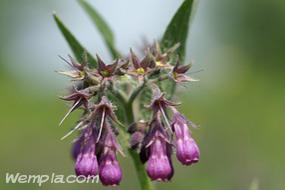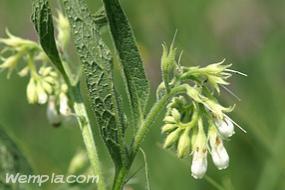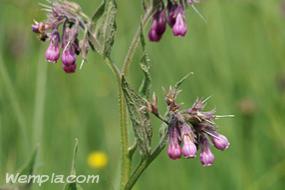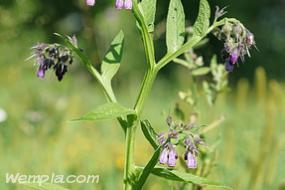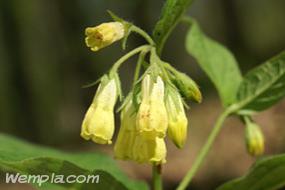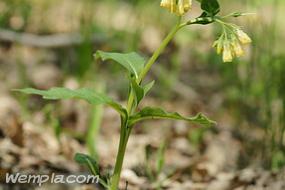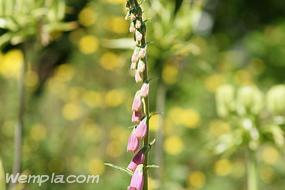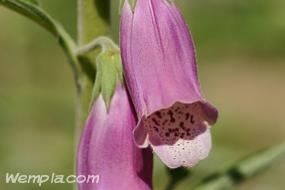Comfrey
Symphytum officinale
Boraginaceae
Edible Uses
 Leaf
Leaf
 Flower
Flower
Medicinal Uses
Main Characteristics
Comfrey is a 10-90 cm tall, perennial plant. His stems and leaves are hairy. The stem is hollow. The leaves are stout, strong midrib bulges on the backside. The leaves forming a rosette are huge, those found on the stem are smaller. These latter are organized alternately. The flower color can be from white to violet. The flowers are bell-shaped, leaning downwards in a monochasium inflorescence.
Habitats
Harvesting aid
 Leaf
Leaf
 Flower
Flower
Confusion with other plants
Symphytum tuberosum
Tuberous comfrey
The two species are very similar. During the flowering period, they can be distinguished by the flower color : tuberous comfrey flowers are yellow, while the comfrey flowers are different colors ranging from white to purple. (It should be noted that the comfrey flowers can be yellow-white, but they are paler than tuberous comfrey's.) The habitat of the two species is also different : while the tuberous comfrey lives more in the forest (hornbeam, beech and oak forest), the commun comfrey likes wet, boggy habitats like.
Digitalis purpurea
Purple foxglove
Before flowering these two species may be confused as the constituent leaves of the rosette are similar. The main difference between the leaf surfaces is that foxglove's leaves are covered with soft and downy hair, while the comfrey's surface is rough, covered with harsh hairy leaves. Attention, this plant is toxic!
Description
Flower

Stem
Leaf

Fruit


